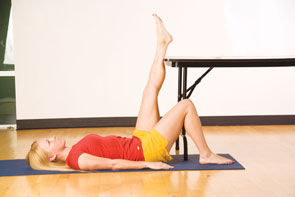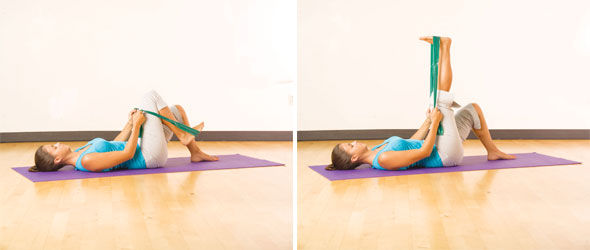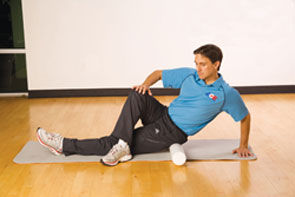With so many different types of stretching techniques for improving flexibility, there tends to be confusion on the difference between these techniques and how each one is executed. To help cut through some of the confusion, here is a quick explanation of six common flexibility techniques along with examples.
Static Stretching

The most common type of stretching, static stretching, is executed by extending the targeted muscle group to its maximal point and holding it for 30 seconds or more.
There are two types of static stretches:
- Active: Added force is applied by the individual for greater intensity
- Passive: Added force is applied by an external force (e.g., partner or assistive device) to increase intensity
Dynamic Stretching
Unlike static stretching, dynamic stretching requires the use of continuous movement patterns that mimic the exercise or sport to be performed. Generally speaking, the purpose of dynamic stretching is to improve flexibility for a given sport or activity.
An example of dynamic stretching would be a sprinter doing long, exaggerated strides to prepare for a race.
Ballistic Stretching
This type of stretching is typically used for athletic drills and utilizes repeated bouncing movement to stretch the targeted muscle group. While these bouncing movements usually trigger the stretch reflex and may cause increased risk for injury, they can be safely performed if done from low-velocity to high-velocity and preceded by static stretching.
Active Isolated Stretching (AIS)

This stretch technique is held for only two seconds at a time. It is performed repeatedly for several repetitions, each time exceeding the previous point of resistance by a few degrees. Much like a strength-training regimen, AIS is performed for several sets with a specific number of repetitions.
Myofascial Release

Through the use of a foam roller or similar device, myofascial release relieves tension and improves flexibility in the fascia (a densely woven specialized system of connective tissue that covers and unites all of the body’s compartments), and underlying muscle. Small, continuous back-and-forth movements are performed over an area of 2 to 6 inches for 30 to 60 seconds. The individual’s pain tolerance will determine the amount of pressure applied to the target area.
Proprioceptive Neuromuscular Facilitation (PNF)
This type of stretching capitalizes on the use of autogenic and reciprocal inhibition, and includes three types of techniques:
- Hold-relax
- Perform a passive 10-second pre-stretch.
- Hold and resist force applied by the fitness professional, causing an isometric contraction in the target muscle group, for six seconds.
- Relax the muscle group and allow a passive stretch; hold for 30 seconds to increase range of motion (ROM).
- There should be a greater stretch during this final phase due to autogenic inhibition.
- Contract-relax
- Perform a passive 10-second pre-stretch.
- The fitness professional applies resistance, counteracting the client’s force of concentric contraction of the target muscle group, without completely restricting the joint through its ROM.
- Relax the muscle group and allow a passive stretch; hold for 30 seconds to increase ROM.
- There should be a greater stretch during this final phase due to autogenic inhibition.
- Hold-relax with agonist contraction
- This technique is similar to the Hold-relax technique but differs for the final stretch.
- Relax the muscle group and allow a passive stretch. Concentrically contract the opposing muscle group of the target muscle group that is being stretched; hold for 30 seconds to increase ROM.
- There should be a greater stretch during this final phase due to reciprocal and autogenic inhibition.
Knowing the difference between each stretching technique and how to properly execute them is necessary for determining which stretch is best for your client's fitness goals and helping them perform them safely and effectively.




 by
by 




